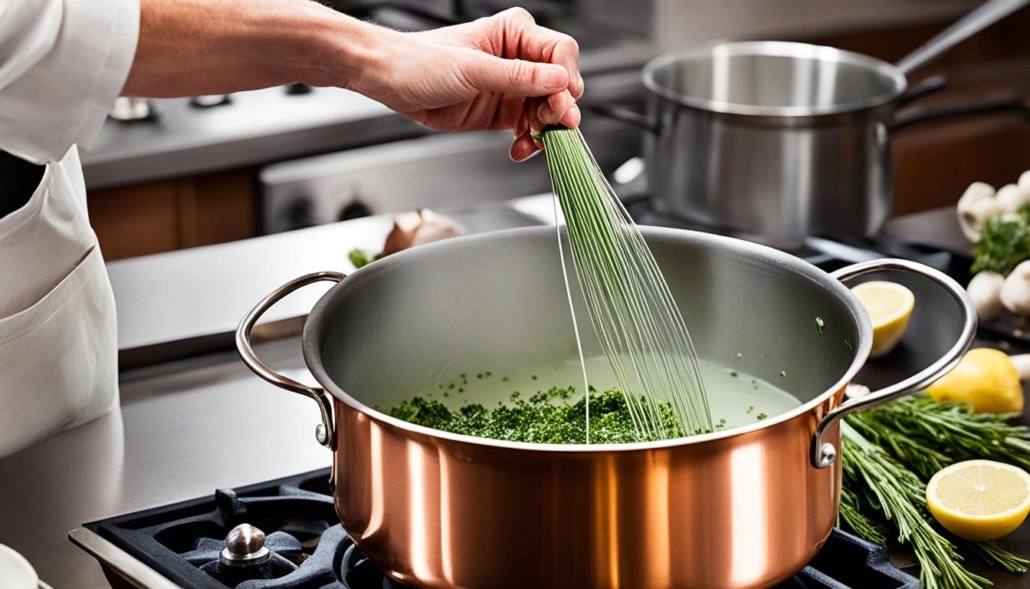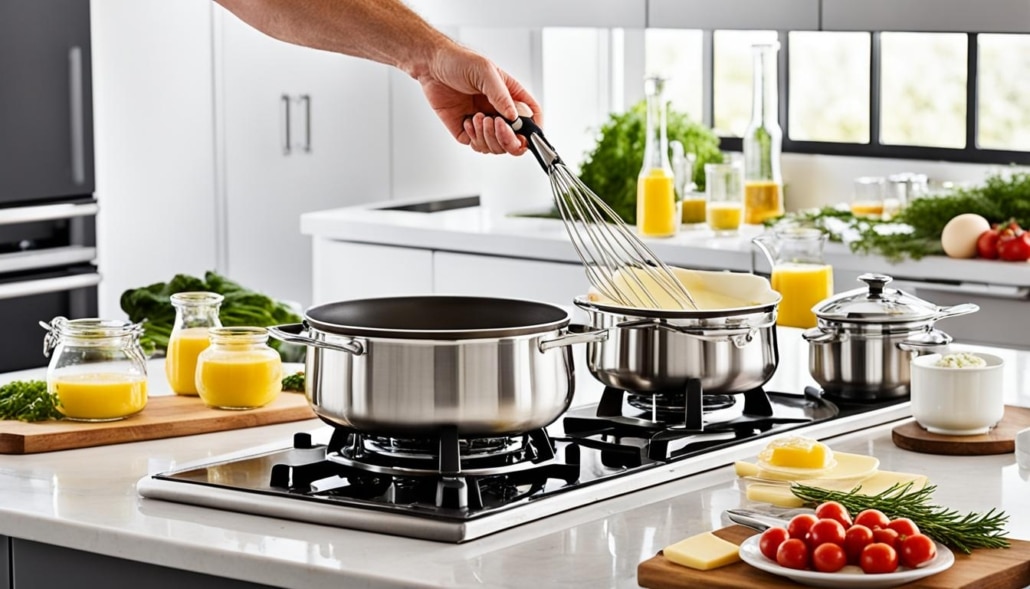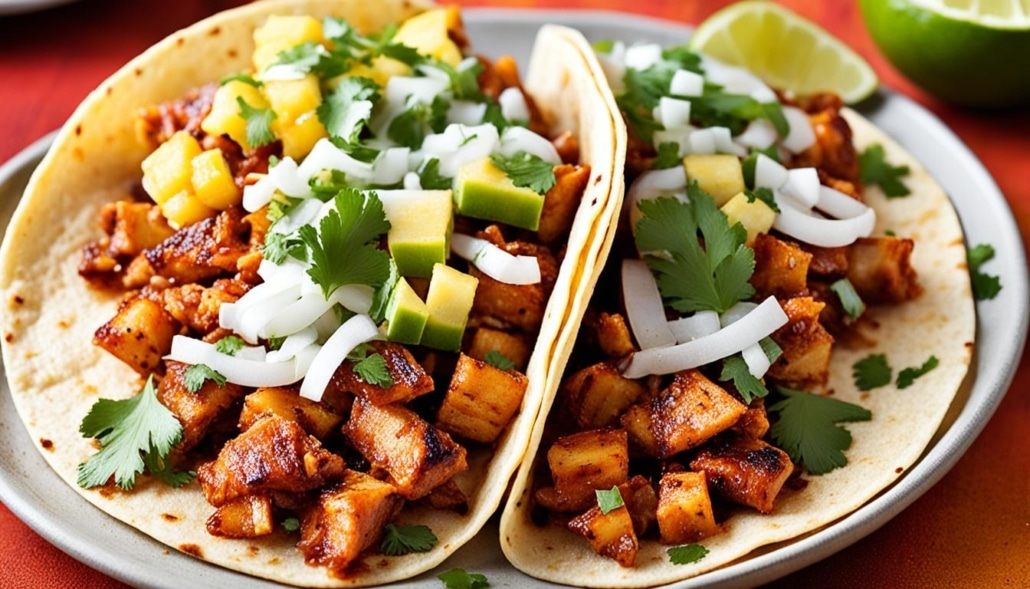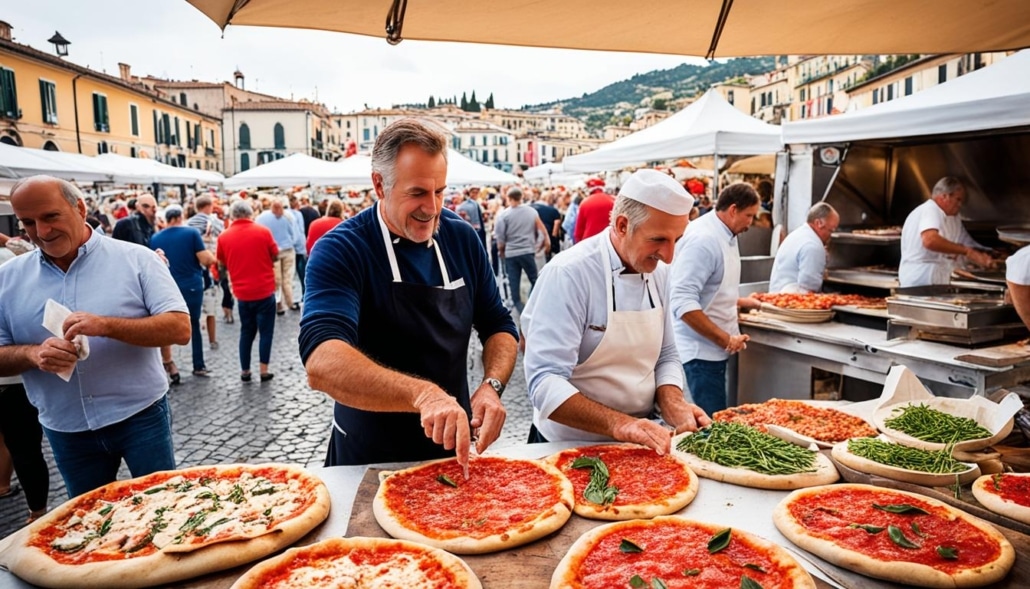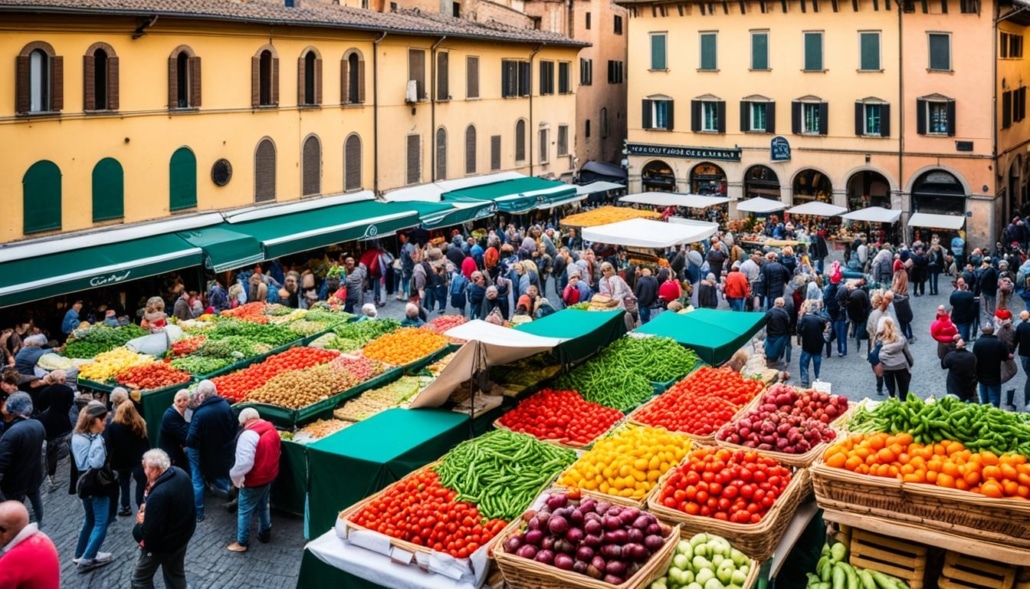Have you ever watched a cooking show and marveled at the precision and artistry of the chefs? They effortlessly chop, sauté, and flambe their way through mouthwatering dishes, leaving you in awe of their culinary skills. What’s their secret? Well, it’s no secret that French cuisine is at the heart of these masterful techniques. French cooking methods have long been revered as the gold standard in the culinary arts, and for good reason.
Picture this: it’s a warm summer evening in the French countryside. The sun is setting, casting a golden glow over the rolling fields of lavender. In the kitchen of a charming farmhouse, a group of chefs gathers around a large wooden table, their white aprons tied securely around their waists. As they sip on glasses of wine and engage in lively conversation, the aroma of simmering sauces and roasting meats fills the air.
This scene captures the essence of French cooking. It’s a combination of passion, technique, and a deep appreciation for quality ingredients. From the bustling kitchens of Michelin-starred restaurants to the cozy home kitchens of amateur cooks, French cooking techniques have the power to elevate any dish to a work of art.
In this article, we will dive into the world of French cuisine, exploring its rich history, the influence of French cooking on global gastronomy, and the essential techniques every chef should know. Whether you’re a professional chef or a home cook looking to expand your culinary repertoire, get ready to embark on a journey of flavor, skill, and culinary excellence.
A Brief History of French Cuisine
French cuisine has a rich history that spans centuries, with influences from various regions and renowned chefs who have shaped its development. From the 14th century onwards, French cooking techniques have evolved, producing a culinary tradition revered worldwide.
Influential Chefs:
Several influential chefs have played a significant role in establishing and refining French cuisine. Their contributions have shaped the classical French culinary techniques we know today.
- François Pierre La Varenne: Considered one of the founding fathers of French cuisine, La Varenne laid the groundwork by documenting French cooking techniques in his renowned cookbook, “Le Cuisinier François.”
- Marie-Antoine Carême: Known as the “King of Chefs and Chef of Kings,” Carême elevated French cuisine to new heights in the 18th century. He created elaborate dishes and introduced innovative techniques, making him one of the most influential chefs of his time.
- Georges Auguste Escoffier: Escoffier revolutionized culinary practices in the late 19th and early 20th centuries. He simplified and codified traditional French cooking techniques, giving birth to the system of kitchen organization known as “brigade de cuisine.”
- Paul Bocuse: A pioneer of the Nouvelle Cuisine movement, Bocuse brought a modern touch to French cuisine in the 20th century. He emphasized the use of fresh, high-quality ingredients and elevated regional dishes to global recognition.
Classical French Cuisine:
Classical French cuisine encompasses a diverse range of methods, ingredients, and flavors. It reflects the rich agricultural diversity and culinary traditions of France’s various regions. French cuisine emphasizes the importance of fresh, seasonal ingredients and meticulous preparation techniques.
| Classical French Cuisine Features | Examples |
|---|---|
| Use of regional ingredients | Bouillabaisse (Provence) |
| Rich sauces | Hollandaise sauce |
| Braising and slow cooking | Coq au Vin |
| Butter and cream | Crème Brûlée |
| Emphasis on presentation | Tournedos Rossini |
The classical French cuisine exemplifies the elegance, precision, and attention to detail that have made French cooking techniques highly regarded in the culinary world.
Essential French Cooking Techniques
French cooking techniques are renowned for their precision, attention to detail, and ability to elevate the flavors and textures of dishes. Whether you’re a professional chef or an aspiring cook, mastering these techniques is crucial for creating exceptional meals that showcase the artistry of French cuisine.
Here are some essential French cooking techniques that every culinary enthusiast should learn:
- Flambéing: This technique involves igniting alcohol to create a burst of flames, adding a rich caramelized flavor to the dish.
- Searing: By quickly cooking ingredients over high heat, searing creates a flavorful crust while maintaining the juiciness of the food.
- Sautéing: Using a small amount of fat, sautéing involves cooking ingredients in a shallow pan over medium to high heat, resulting in deliciously browned and flavorful dishes.
- Pan-frying: This technique involves cooking ingredients in hot oil in a pan, creating a crispy exterior while keeping the interior tender and juicy.
- Poaching: By gently cooking food in liquid at a low temperature, poaching allows the flavors to infuse while maintaining a delicate texture.
- Broiling: By exposing food to direct heat from above, broiling quickly cooks the surface, creating a caramelized crust.
- Grilling: Grilling adds a smoky flavor and distinctive char marks to ingredients, resulting in a tantalizing aroma and delicious taste.
- Braising: This slow cooking method involves searing ingredients before simmering them in liquid, resulting in tender and flavorful dishes.
- Baking: Baking is a dry heat cooking technique that uses the oven to cook a variety of dishes, from pastries to meats, resulting in beautifully browned and cooked food.
- Roasting: Similar to baking, roasting involves cooking food in the oven, but at higher temperatures, creating a crispy exterior and juicy interior.
Each of these techniques requires specific skills and knowledge to achieve the desired results. By mastering these essential French cooking techniques, you’ll be able to create dishes that not only satisfy the palate but also showcase your culinary skills.
Now that we’ve explored the essential French cooking techniques, let’s dive deeper into the world of traditional French cooking techniques and terms.
Traditional French Cooking Techniques and Terms
The traditional French kitchen is a treasure trove of unique cooking techniques and terms that are essential for understanding and practicing French cuisine. These techniques and terms have been passed down through generations, shaping the culinary landscape of France. By familiarizing yourself with these techniques and terms, you can unlock the secrets of the traditional French kitchen and elevate your cooking skills to new heights.
Cooking Techniques
Below are some famous French cooking techniques that every aspiring chef should know:
- Bouquet Garni: A bundle of herbs tied together with a string, often consisting of parsley, thyme, and bay leaves, used to infuse flavor into stocks, soups, and stews.
- Chiffonade: A technique of finely slicing herbs or leafy vegetables into thin ribbons, often used for garnishing or incorporating into salads.
- Coulis: A sauce made from puréed fruits or vegetables, commonly used as a base or accompaniment for various dishes.
- Déglacer: The process of deglazing a pan by adding liquid, such as wine or stock, to loosen the browned bits and create a flavorful sauce.
- Demi-Glace: A rich, concentrated sauce made by reducing and thickening a mixture of veal or beef stock and brown sauce, often used as a base for other sauces.
Cooking Terms
Here are some traditional French cooking terms that will enhance your understanding of French cuisine:
- En Papillote: A method of cooking food by enclosing it in a parchment paper or foil pouch, allowing the ingredients to steam in their own juices.
- Julienne: A knife-cutting technique that creates thin, matchstick-sized strips of vegetables or other ingredients.
- Mirepoix: A mixture of diced onions, carrots, and celery used as a flavor base for various dishes, such as stocks, soups, and sauces.
- Mise en Place: The preparation and organization of ingredients and tools before starting the cooking process, ensuring a smooth and efficient workflow in the kitchen.
By embracing these traditional French cooking techniques and familiarizing yourself with the associated terms, you can bring the artistry and elegance of French cuisine into your own kitchen. Let’s explore these techniques and terms further in the table below:
| Technique/Term | Description |
|---|---|
| Bouquet Garni | A bundle of herbs used for infusing flavor into dishes |
| Chiffonade | A technique for finely slicing herbs or leafy vegetables |
| Coulis | A sauce made from puréed fruits or vegetables |
| Déglacer | The process of deglazing a pan to create a flavorful sauce |
| Demi-Glace | A concentrated sauce made from reduced stock and brown sauce |
| En Papillote | A cooking method using parchment paper or foil pouches |
| Julienne | A knife-cutting technique for creating thin strips |
| Mirepoix | A mixture of diced onions, carrots, and celery used as a flavor base |
| Mise en Place | The preparation and organization of ingredients and tools |
Embrace the traditions and techniques of the traditional French kitchen and elevate your culinary skills to a new level of sophistication. With each dish you create, you’ll embody the essence of French cuisine and delight your taste buds with the flavors of France. Bon appétit!
Conclusion
French cooking techniques are an integral part of the culinary world and have had a significant impact on global cuisine. Mastering these techniques is crucial for aspiring chefs and culinary enthusiasts who want to enhance their skills and create delicious, flavorful dishes. By understanding the history, basics, and traditional techniques of French cuisine, you can open up a world of culinary possibilities and bring the art of French cooking into your own kitchen.
Whether you’re pursuing a career in the culinary arts or simply enjoy experimenting with new flavors, delving into the world of French cooking techniques can be a rewarding experience. From mastering the intricate methods of flambéing and searing to perfecting the art of sautéing and pan-frying, each technique adds depth and complexity to your dishes.
French cuisine is known for its emphasis on fresh, high-quality ingredients and the meticulous attention to detail in preparing each dish. By incorporating French cooking techniques into your culinary repertoire, you can elevate your dishes to new heights and impress family and friends with your culinary skills.
So, don’t hesitate to explore the world of French cooking techniques and discover the joy of creating exquisite meals. Whether you’re cooking for yourself or a large gathering, mastering French culinary techniques will allow you to express your creativity and passion for food while embracing the rich tradition of French cuisine.
FAQ
What are some essential French cooking techniques?
Some essential French cooking techniques include flambéing, searing, sautéing, pan-frying, poaching, broiling, grilling, braising, baking, and roasting.
Who were some influential chefs in the development of French cuisine?
Some influential chefs in the development of French cuisine include François Pierre La Varenne, Marie-Antoine Carême, Georges Auguste Escoffier, and Paul Bocuse.
What are some traditional French cooking techniques and terms?
Some traditional French cooking techniques and terms include bouquet garni, chiffonade, coulis, déglacer, demi-glace, en papillote, julienne, mirepoix, and mise en place.
How have French cooking techniques influenced global cuisine?
French cooking techniques have significantly influenced global cuisine, with culinary professionals and enthusiasts worldwide incorporating these techniques into their own cooking practices.
Why should someone learn French cooking techniques?
Learning French cooking techniques can help aspiring chefs and culinary enthusiasts enhance their skills, create exceptional meals, and gain a deeper understanding and appreciation for the artistry of French cuisine.

